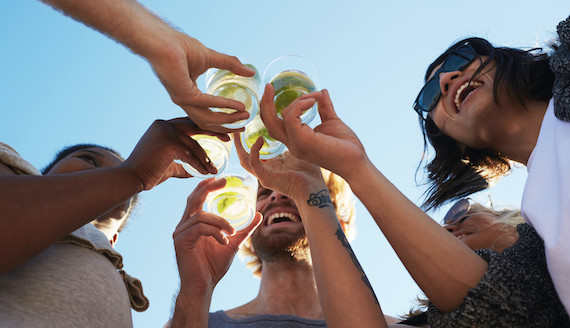It’s the third most consumed spirits category on the planet, but according to IWSR, more than 99% of all cachaça is consumed in Brazil. The next largest market, Germany, accounts for a mere 0.2% of global consumption.
There are 5,000 registered brands, many more unregistered, and 40,000 distilleries, according to The Brazil Business.
“Cachaça consumption in Brazil alone is twice the size of gin globally,” says Hamilton Lowe, co-founder of Yaguara cachaça. “Northern Brazil drinks more Caipirinhas than gin and tonics are drunk in the world. It’s enormous.”
The pandemic caused global spirit consumption to drop to its lowest level in recent history, so recent volume declines can be considered par for the course. Brazil has had a rough time with Covid, but all things considered, the category didn’t have a bad 2020. Globally, cachaça was down 0.4% in volume in 2020, according to IWSR, which was a better performance than the previous two years, when volumes had fallen 1.6% in 2018 and 2.3% in 2019. Some cachaça brands navigated difficult situations impressively. Category giant Pitú managed to post year-on-year growth of 11%, almost reaching 12 million 9-litre-cases in the process.
“Although many bars and restaurants were shut in 2020, there was a relevant increase in alcoholic beverage consumption at home and that helped us to achieve this result,” says Leila Lopes, international market coordinator at Pitú. “We reacted promptly to the pandemic changes by adjusting our communication and marketing strategies and our consumers kept on purchasing our products online and in supermarkets.”
But, despite decent performances domestically, the volume decreases are expected to continue. IWSR forecasts that global cachaça volume will fall by 1.6% CAGR from 2021-2025, but the top five export markets for cachaça, – Germany, France, the US, Portugal and Paraguay – are forecast to show volume growth over the same period. If cachaça brands are able to engage with international markets in any way resembling domestic performances, the scope for the category is enormous.
Cocktails could hold the keys to the rest of the world. Globally, cachaça is recognised for Caipirinhas, but as an ingredient, it’s no one-trick-pony.
“The Caipirinha is a cocktail icon of Brazilian culture, but it would be best to do twists on classics to show the versatility of the drink,” says Márcio Silva, bar consultant and former co-owner of Guilhotina in São Paulo. “Cachaça can be used in classics that would traditionally call for a different base spirit – a cachaça Negroni or a Daiquiri made with cachaça. There is a twist on a Manhattan that we call a Rabo de Galo in Brazil, it’s served on the rocks.”




